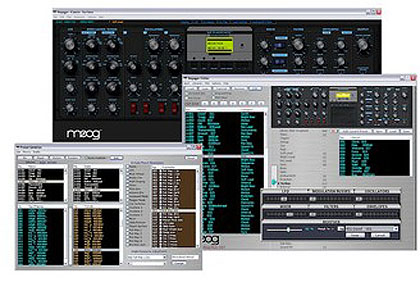Let’s say you want to cruise by the outer planets. How long would it take to get to Neptune?

The principle of Hohmann transfer orbits tells us that if the launch velocity were 41 kilometers per second, you’d arrive in 31 years. But the Voyager 2 spacecraft, launched in 1977, got to Neptune in 1989—only 12 years after liftoff. It had a gravitational assist, picking up lots of extra speed as it swung around Jupiter. From Hohmann transfers to heliocentric frames, Aeronautics and Astronautics 279: Space Mechanics looks at the orbits of near-earth satellites and interplanetary probes, as well as the sun’s and moon’s effects on earth satellites. “It’s some of the oldest stuff that’s taught in engineering here, and it deals with classical problems of celestial mechanics and orbital mechanics that date back to Newton,” says assistant professor Matthew West. “It’s concerned with problems such as how one makes observations of the current positions of the planets and predicts where they’ll be in the future, or how one knows when a comet is going to come back.” West grew up in the era of Star Wars and says he’s always been fascinated with space—“from the point of view of the problems, and from the romantic side of space travel.” As a 4-year-old, he wanted to be an astronaut, and so do many of the students who apply for graduate programs in the aeronautics and astronautics department (Stanford has graduated 18).
“It’s a common aspiration in the personal statements they write,” West says. “It’s definitely cool.” Courtney Kettenburg thinks she was probably 14 when she saw the movie Apollo 13: “That did it for me. I knew I wanted to design things to go into space.” One of five Lockheed Martin engineers enrolled in West’s course, Kettenburg is working toward a master’s degree in mechanical engineering and applying just about everything she learns in class to her day job. “At work, I build satellites.
Then I come in here and talk about how they’re going to be launched and transported,” she says. “It’s neat.” West launches his course with the ancient Greeks, whose achievements he calls “astounding.” Long before Columbus challenged flat-earth fears by crossing the Atlantic, “the ancient Greeks not only knew the earth was a sphere, but they knew what the radius of the sphere was,” West says. Download Full Metal Panic The Second Raid Ova Sub Indo. “And they knew how far away the moon was by careful observation of eclipses.” These days, designing the multiple-body trajectories that boost satellites into orbit is a complex computational business. So West challenges would-be space explorers to understand the fundamentals behind fancy calculating tools like Matlab. As he covers blackboards with velocity changes, cosines, eccentricities and inclinations, West encourages students in his classroom and those watching the Internet broadcast from their desks at Boeing to ask hard questions—about Bode’s law of mean distances of principal planets from the sun, or Kepler’s laws of planetary motion. “These days there are computer packages that do much of this material for them,” he says.
Find Non Ascii Characters In Text File Notepad Clip. “But they still come here to understand what the software is doing.” Many of the class members are starstruck by NASA’s plans for robotic and manned missions to Mars. To shoot straight toward the Red Planet, West tells them, would be “horrendously expensive.” Instead, mission planners aim to arrive on Mars at a certain altitude above the surface, using aero-braking and hyperbolic approximations, and adjusting height and velocity trade-offs up until the last moment.
“It’s all math and equations,” West says. “And the basic equations haven’t changed since Newton discovered them.”.
October 20, 2004 Moog Music has a new way to store, organize, compile and create Voyager presets -- the Minimoog Voyager Editor-Librarian Software. This new software includes all the functions contained in a Voyager preset on one screen. Functions of the editor-librarian include: high resolution controls for creating precise adjustments to your presets, a 'Genetics' function for mutation and morphing of presets, and the 'Librarian' function which allows the storing of a virtually unlimited number of presets, in user defined categories. Through a MIDI connection, you can pull or replace single presets or the entire bank of presets from the Voyager to your computer for storage or editing. Writing presets to your Voyager's memory from your computer is as easy as a click of your mouse.
Once presets for the Minimoog Voyager are in the computer all parameters are displayed on the graphical user interface, including EDIT mode functions like Pot Mapping, Touch Surface Destinations and Filter Poles. 'Genetics' is a tool used for automatic generation of Voyager presets. Presets can be created randomly, or can be created as the 'Children' of two 'Parent' presets. A user can select Morph, Mutate, Randomize, or Mix to generate a bank of presets from the Parents. The outcome is a fast and fun way to create unique and interestingsounds. The Editor also allows users to add a library in user-named categories for creating custom preset banks.
There's also a Voyager OS update function to simplify the updating of the Voyager's firmware. The Minimoog Voyager Editor-Librarian Software requires a Mac or PC computer with a MIDI interface, and is available as a download from moogmusic.com for $79. For more information, visit their web site.
Now updated to support Voyager OS v3.5 The Minimoog Voyager Editor-Librarian is the ultimate tool for organizing and creating presets for the minimoog Voyager.
